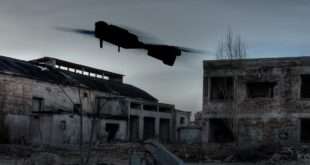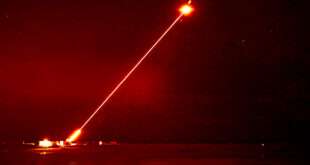Finmeccanica – Selex ES has announced its latest infrared technology, a detector made up of more than a million individual infrared pixels – each less than 1/12th the thickness of a human hair. The new detector, called “SuperHawk”, is able to capture better than HD-quality images in total darkness by detecting temperature differences as small as 1/50th of a degree.
Modern armed forces follow strict ‘rules of engagement’ to determine whether it is necessary to take action against potential threats. Here, image quality makes an important difference – a blurry image may show someone holding a long object, while a sharper image would show that the object is a shovel rather than a rifle – hugely important when making an engage/don’t engage decision.
Because Selex ES’s pixels are 8-microns in size, you can fit more of them in a normal-sized detector, essentially meaning that you can obtain a sharper image for the same size, weight and, critically, price.
Small pixels usually means that more signal leaks into neighbouring pixels – a problem currently facing many competitors working to reduce their pixel sizes – leading to blurred, rather than sharper, images. SuperHawk’s pixels feature a structure unique to Selex ES – they’re physically isolated from each other so that the signal cannot blur at all, resulting in the sharpest possible image.
The secret behind the new technology is a process of growing infrared-detecting crystals called Metal Organic Vapour Phase Epitaxial (or ‘MOVPE’) which Selex ES has been continuously improving for the last 30 years. MOVPE has allowed the development of 8-micron blur-free pixels in the new, production ready, SuperHawk detector. It is expected that designers of thermal imaging cameras, including Selex ES themselves, will use the new detector to reduce system size, weight and costs while achieving equivalent ranges, or increasing the range at which you get a clear picture without increasing the cost of the system.
 Defense Arabia Defense Arabia is your source for the latest news on defense, national security and analysis in the Middle East.
Defense Arabia Defense Arabia is your source for the latest news on defense, national security and analysis in the Middle East.



